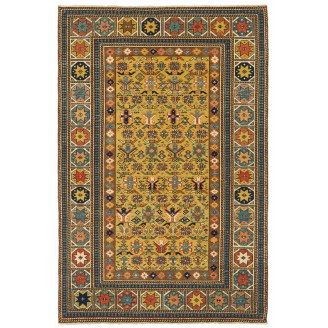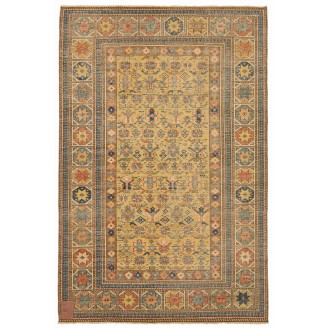Chichi Kuba Rug with Kufic Border
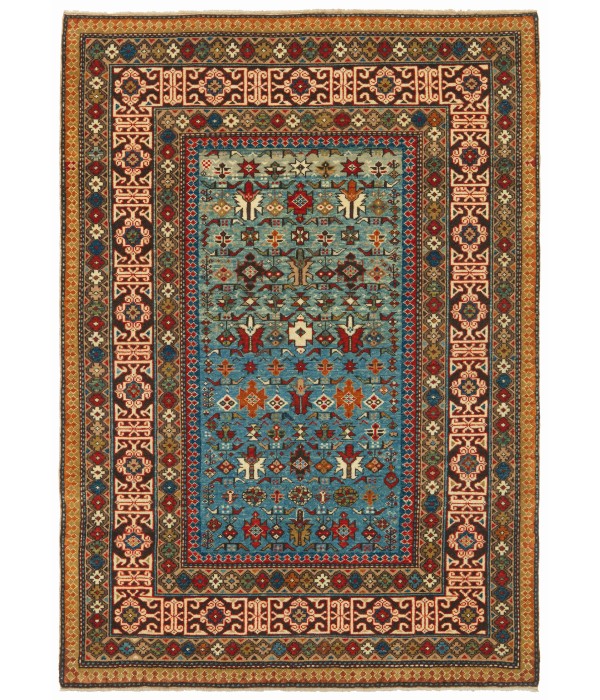
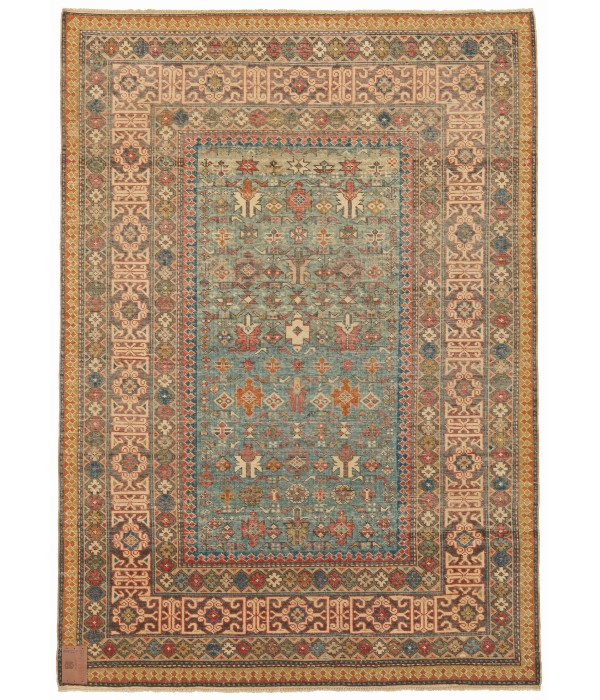
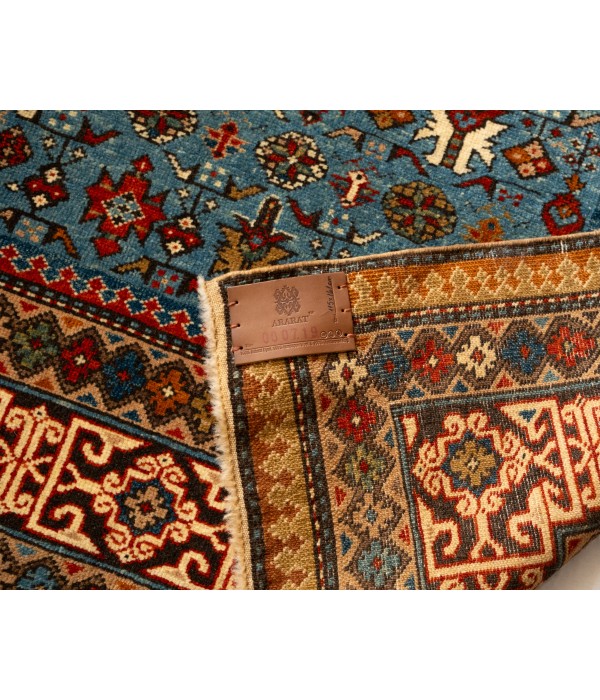
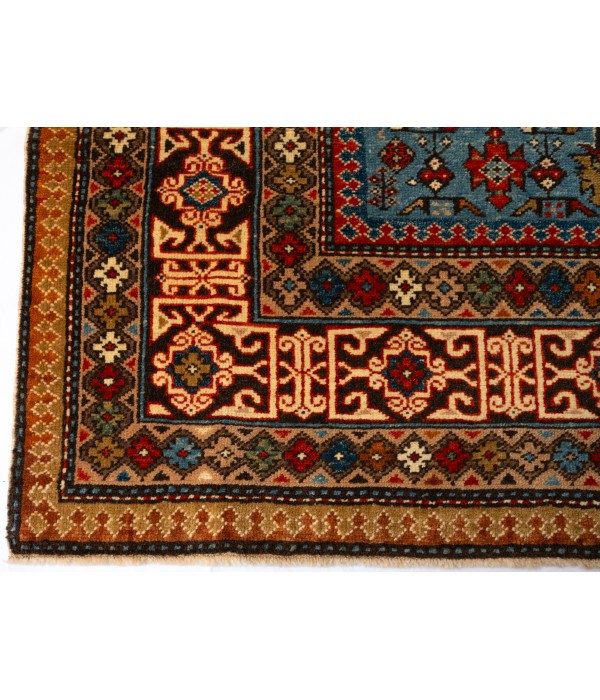
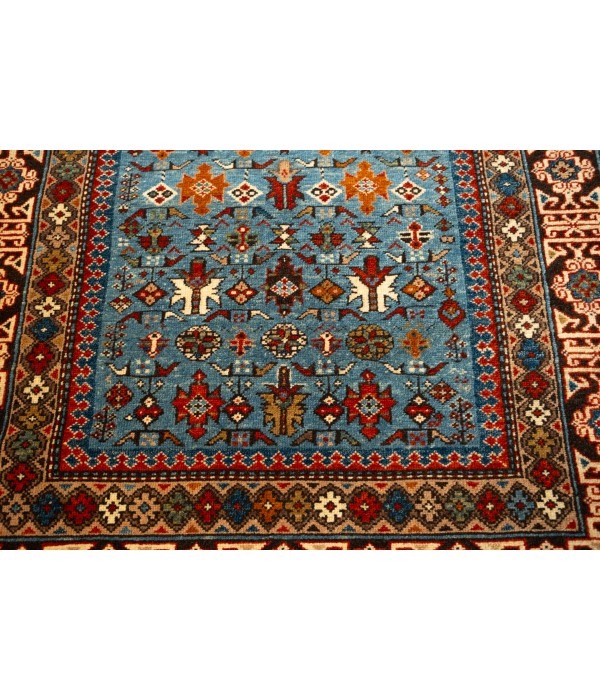
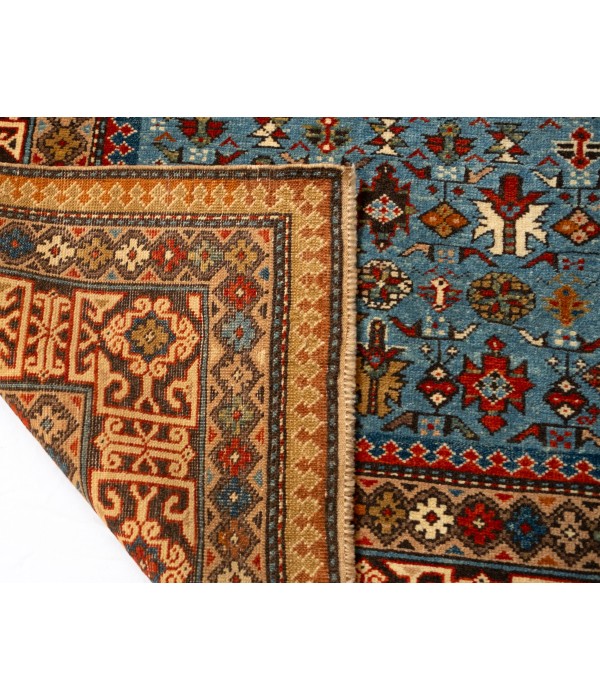
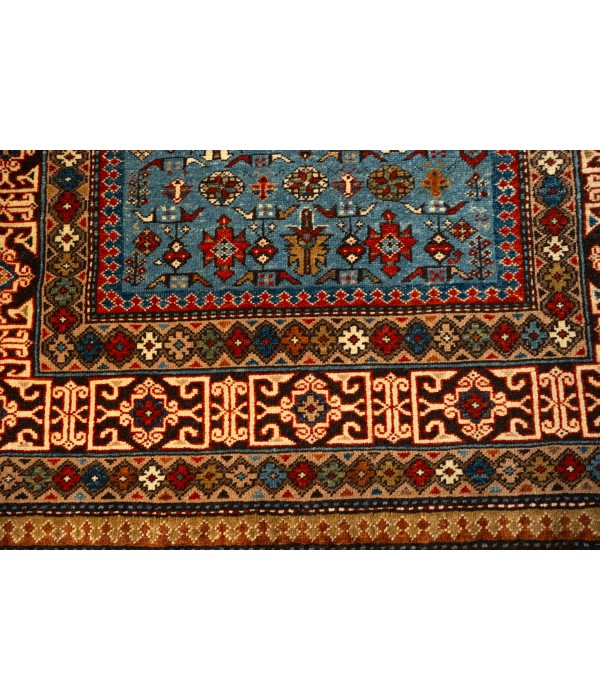
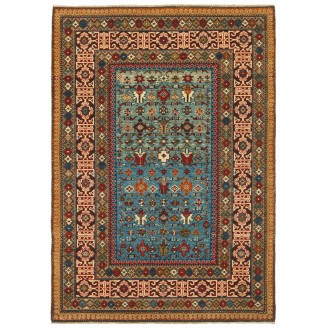
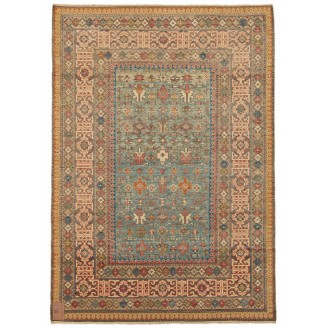
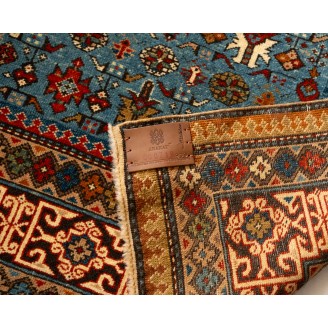
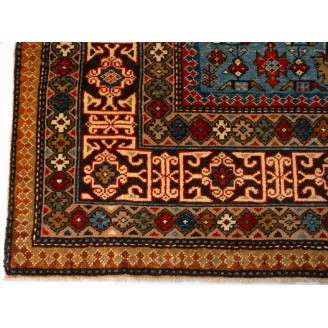
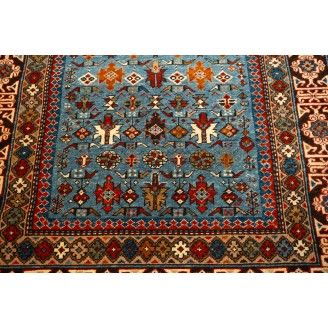
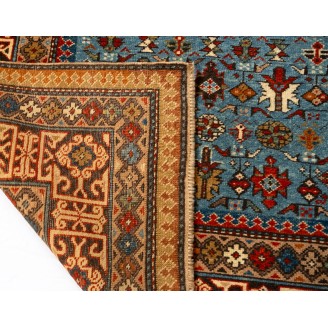
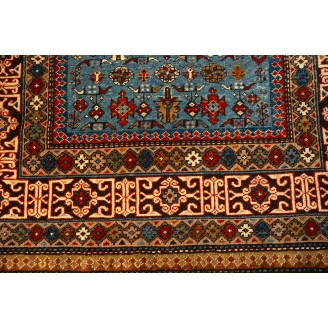
The design source of the rug comes from the book Oriental Rugs Volume 1 Caucasian, Ian Bennett, Oriental Textile Press, Aberdeen 1993, nr.360. The alternating row of octagons and spiky stylized flowers are typical of a group called Khirdagyd-Chichi, from the late 19th century, Village of Chicli, Kuba region, Caucasus area. It is framed with a series of borders, the main of which is the “Kufic border”. The design of the rug is interpreted by our designers, and soft colors are chosen for this rug.
A group of finely woven rugs, the field composition consisting of a tight overall series of geometric and floral motifs, is attributed to the village of Chichi, about thirty kilometers southeast of Kuba. This village is presumed to be, or have been, inhabited by descendants of the Chechens, a tribe that once inhabited much of the north-east Caucasus but which was, apparently, forcibly moved to central Asia by the Soviet authorities in 1943.
Perhaps the most distinctive feature of Chichi rugs is the border, which often consists of a continuous diagonal and rosette pattern, which can be seen in all the examples except those rugs which Kerimov, followed by Schürmann, called 'Khirdagyd-Chichi'. This does not mean, of course, that all rugs with this border design are necessarily Chichi; indeed, many authorities prefer a less defined attribution and describe them simply as north-east Caucasian. Others find little to distinguish them from the main body of Daghestan prayer rugs.
Color summary: 10 colors in total;
- Cocoa Brown 109 (No Dye - Sheep's Color)
- Imperial Red 415 (Madder Root)
- Natural Wool Color 320 (No Dye - Specially Washed)
- Dusty Turquoise 340 (Spurge - Madder Root - Indigo - Walnut Husk)
- Burlywood 135 (Spurge - Madder Root)
- Kumera 326 (Pomegranate - Spurge - Madder Root)
- Jericho Jade 25 (Spurge - Indigo)
- Arable Brown 430 (Madder Root)
- Mandarian Orange 529 (Madder Root - Walnut Husk)
- Yellow Green 419 (Henna - Indigo)
For more information about our Colors.
Dimensions:
5 ft 3 in x 3 ft 9 in ( 161cm x 115cm )

